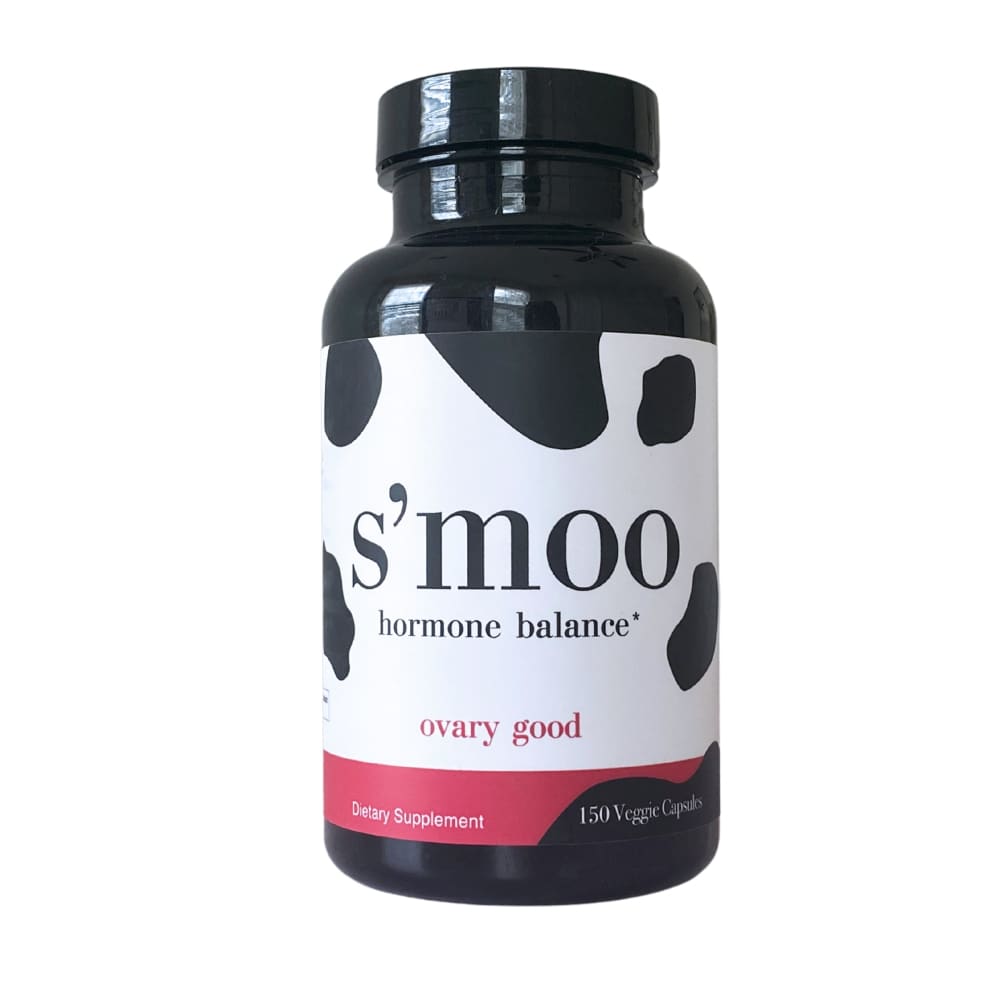The Benefits of Yoga for PCOS
PCOS (Polycystic ovary syndrome) affects 6-12% of women during their childbearing years. This common hormone imbalance can produce excess male hormones, weight gain, irregular periods, as well as difficulty with ovulation and fertility.
So what can you do about it? Here at S’moo, we want to give you all the information you need to lead your best life. While everyone’s body responds differently to different techniques, there is no harm in exploring all your options to find if one works for you, and yoga for PCOS might be the answer you are looking for to help manage your symptoms!
Is Yoga Useful for Women With PCOS?
The answer is yes! The practice of yoga is useful for women with PCOS, and we can’t wait to tell you why. Through time yoga has been recognized as a mind-body therapy that can build strength, flexibility, confidence, and mindfulness and improve reproductive health, mental health, and relaxation. It is a physical activity that also can promote positive body functions like better respiratory functions, improved cardiovascular health, reduced chronic pain, and relief from anxiety or depression.
Studies show that practicing yoga for one hour a day for a minimum of twelve consecutive weeks can improve insulin sensitivity and more. Keep reading to find all the benefits that can improve your quality of life.
Let’s get started and see how it may benefit you on your journey to solving hormonal imbalances.
Regulates Hormones
Yoga for hormonal balance? Yes! Yoga sessions may help regulate your hormones from the deep breathing that slows the production of the hormone cortisol (the stress hormone), and this affects your nervous system. Research also points to yoga positively impacting thyroid health for women with PCOS working through hypothyroidism.
Normalizes Menstrual Cycles
Irregular menstruation can be affected by a variety of things, such as fluctuating body weight, stress, excessive amounts of physical workouts, medication side effects, diabetes, hypertension, PCOS, endometriosis, cervical cancer, and more.
Yoga is an ancient natural physical exercise that boosts reproductive well-being and can regulate menstrual cycles by creating instant relief from stress, relaxing the body, calming the mind, and activating reproductive operations in women. This is why using yoga for irregular periods and PCOS has been successful for many women.
Reduces Testosterone Levels
In a recent study on the impact of yoga, twenty-two women (aged 22-43) were tasked to be part of a mindful yoga class, one hour long, three times a week for three months. Mindful yoga involves being aware of your body’s posture and breathing. Study participants found at the end of the trial that this group had lower free testosterone.
Relieves Stress and Anxiety
Yoga has been used to help with mental health by reducing stress and anxiety, but does it really work? Yes! Yoga actually helps the HPA axis function and reverse the effects of stress, anxiety, and depression. The HPA (hypothalamic-pituitary-adrenal) axis raises the stress level cortisol.
Improves Metabolic Markers
Women with PCOS often struggle with insulin sensitivity. Did you know that research suggests yoga can improve glucose, insulin, and lipid values more successfully than physical exercise? Yoga is overall more effective at improving cholesterol and insulin values in some women with PCOS.
Enhances Fertility
Women often find out they have PCOS once they start their fertility journey. Research suggests that yoga is great for your PCOS conception journey as it helps restore the neuro-hormonal balance and increase circulation in your pelvic region. As well as what we mentioned above, yoga helps reduce testosterone levels, which can also help while trying to conceive while working through PCOS.
Are There Specific Poses in Yoga That Can Help Women With PCOS?
Studies show positive changes in PCOS symptoms with any moderate exercise, but yoga is unique because it is accessible to many fitness levels and age ranges. Plus, the added benefit of yoga is creating mindfulness and promoting relaxation and a balanced mood. With that in mind, here are some yoga poses to start with!
*Remember - yoga may look easy, but some of these poses take time to master. Don’t rush your body, skip poses that don’t feel right, or start off slow and build up to the full pose. Go at your own pace and listen to your body.
Malasana (squat pose): Mala = Necklace/Garland Asana = Posture
This is a great option for strengthening the pelvic floor and abdominal core while opening your hips. For women working through PCOS, this pose can increase blood flow and improve circulation to the pelvic region. The benefits are improving metabolism and digestion.
*Helpful tips for starting this pose: use yoga blocks (one or two) under your glutes for extra support until your body is able to do the position without them.
- On the mat, place your feet apart and bend your knees until your buttocks are close to the floor in a squat position.
- When you feel comfortable and balanced, you can bring your hands together in the center of your chest in a prayer position.
- Try to stay in this deep squat with your feet flat on the mat for as long as possible.
- Use your legs to exit the position by standing straight up.
- Repeat.
Setu Bandhasana (Bridge Pose)
Looking to reduce stress? Try this bridge pose to remove tension from your back muscles.
- Start on your back, laying on the mat with your knees bent and your feet flat on the floor, hips width apart. Keeping your arms on the side of your body with your palms down, your fingers should be able to touch your heels.
- Using your legs, push your feet onto the floor to lift your hips as you inhale and lift your hips and spine off the mat. At this point, you can squeeze your knees lightly together.
- Use your arms and shoulders to lift your chest and engage your buttock and legs to lift your hips higher.
- Take a deep breath and hold it for 2-4 breaths before releasing and starting again.
Chakravakasana (Cat-Cow Pose)
This yoga pose is one most people learn at the beginning of their yoga journey, but it is popular for a reason, and it is highly recommended for PCOS.
- Start with getting on your hands and knees in what is called a tabletop position. You’ll want to have your palms down, keeping your wrists and elbows under your shoulders.
- As you take your first inhale, bend your spine in a way that lowers your belly toward the mat, then lift your chin and the tailbone at the same time.
- As you exhale, gently curl your spine by tucking the tailbone and chin.
- Repeat at least ten times or whatever feels best for your body.
Supta Baddhakonasana (Butterfly Pose)
The butterfly pose is another popular yoga position you’ve probably seen before. This butterfly pose is often shown in two ways. One is with just your legs, and the other is a leaned-back position while your legs are in the same position. This pose will give your back and spine support while relaxing your shoulders and chest and keeping your hips open.
- Sit on your mat and press the soles of your feet together.
- Let your knees relax and drop to the sides. *You can stay here or continue to the next step.
- Carefully let your body lean back toward the mat until your back is on the floor while keeping your legs in place.
- Breathe in, using diaphragmatic breathing, and you can stay here as long as it feels good.
Conclusion
Yoga is a successful and powerful way to take back control and manage your PCOS symptoms. Through yoga, you may be able to lower testosterone, better control the cortisol hormone (the stress hormone), improve your circulation in your pelvis for increased reproductive well-being and regulate your menstrual cycle. Just remember, you are not alone, and if you are working through PCOS, make sure to connect with other women going through the same journey. Here at S’moo, we have an amazing group of women on our free S’moo Babes app.
Together we can connect and help each other live our best lives.
Remember that yoga is only one part of the treatment plan for managing your PCOS. Visit our other blogs on nutrition, vitamins and minerals, exercises, and more. You can also try supporting your hormone balance journey with S’moo Ovary Good, Hormone Balance Supplements for Women. With over 5,000 five-star reviews and thousands of women who have benefited from these natural PCOS Supplements, you’ll want to give it a try!
Sources:
https://pubmed.ncbi.nlm.nih.gov/27054602/
https://www.mea.gov.in/search-result.htm?25096/Yoga:_su_origen
https://www.emedicinehealth.com/yoga/article_em.htm
https://academic.oup.com/humupd/article/17/2/171/692261?login=false










